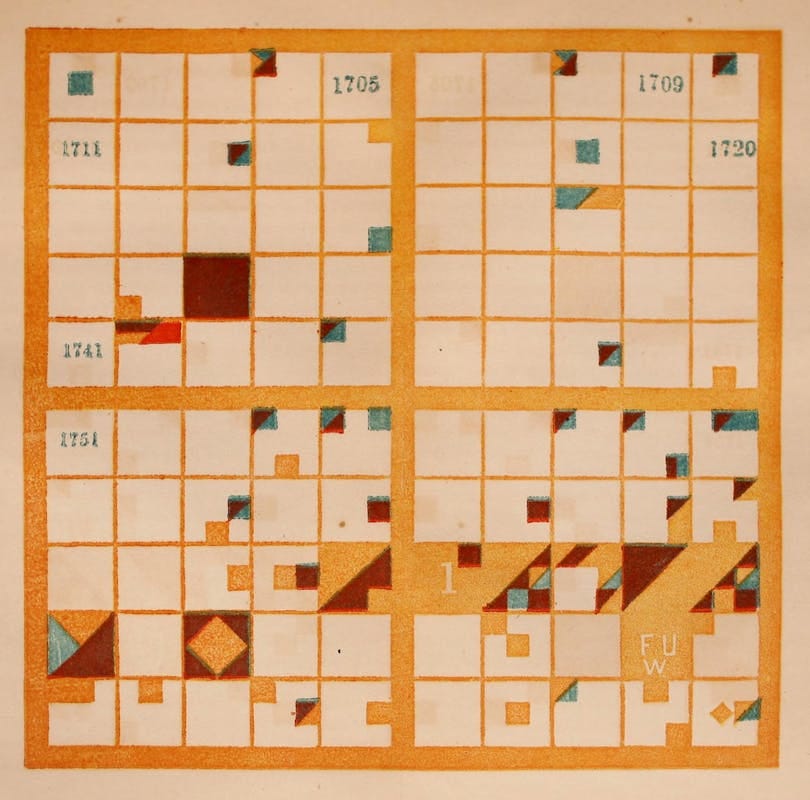Looking for Better Retention? Combining the book with Spaced Repetition
Classrooms around the world rely on printed materials for instruction. Are books the best available tool? Are we even using them correctly? Here's how you can enhance book use with spaced repetition
Is using a coursebook really the best way to teach or learn? There’s a growing debate in education about whether our heavy reliance on textbooks is helping or hindering student learning. Much of this debate focuses on how the syllabus is put together, if content sequence is based on how we actually learn or if books offer more - or fewer - opportunities to work with implicit learning.
Even if we follow the textbook from cover to cover, and get our students to do every activity - making their parents extremely happy - can we be sure our students are actually learning? Does completing exercises in a linear sequence really guarantee retention and understanding? Most teachers will agree that the answer is not always. Which brings us to the real issue. What happens between doing an activity in a book and learning from it?
Whether we like books or not, in most classrooms around the world, they are a central part of the teaching and learning experience. So rather than dismiss them, for now, let’s ask a better question: How can we make the most of them? The answer may lie in a concept that comes from cognitive sciences: spaced repetition.
We’ve known it for years
It’s no secret to any of us that studying hours and hours every day by completing written activities in our books or worksheets can: 1) overload our memories; 2) leave us with very little to recall after just a couple of minutes, and 3) make us have no recollection that we even studied those topics days after. Here’s an illustration for you to understand the first point: imagine trying to water a vase of basil with 5 pints of water, one after the other. The poor plant has no chance in absorbing all that water, nor does it need to.
Listen to Dr. Nidhi Sachdeva talk about working memory capacity:
Episode 2 - Dr. Nidhi Sachdeva
Learning Cosmos is a reader-supported publication. To receive new posts and support my work, consider becoming a free or paid subscriber.
Our schools are filling our students’ heads with so much water that they’re practically having a water overdose - if that example makes any sense. The apparent paradox is that after receiving hours of instructions and completing their books from cover to cover, when it comes to their tests, many claim that they have forgotten everything. Is this how volatile our memories are?
Well, the problem has to do with how much and how often we study. Since the early 1900s, after Herman Ebbinghaus' memory experiments that took place in the 1880s, we have known that cramming is not the most effective way to learn. Ebbinghaus wrote that:
For the relearning of a 12-syllable series at a definite time, accordingly, 38 repetitions, distributed in a certain way over the three preceding days, had just as favorable an effect as 68 repetitions made on the day just previous. Even if one makes very great concessions to the uncertainty of numbers based on so few researches, the difference is large enough to be significant. It makes the assumption probable that with any considerable number of repetitions a suitable distribution of them over a space of time is decidedly more advantageous than the massing of them at a single time.
That brings me to three things to bear in mind when teaching our students:
1) Their memories are limited (and so are ours and everybody’s)
Most studies show that too much information can cause cognitive overload and decrease retention. How much is too much? Anywhere between 4 and 9 chunks at a time - and this is controversial (Cowan, 2001; Miller, 1956).
2) An effective way to study is to space out restudy sessions over a long period rather than cramming
Small doses of study here and there can go a long way when it comes to retention (Kornell & Bjork, 2008).
3) Consolidation of semantic memory occurs in our sleep
If we want to check if students really learned something, we must quiz them over the course of weeks rather than just ask them at the end of the lesson. Understanding and remembering something immediately after input is not the same as long-term learning.
What should we be doing more then? The answer comes the concept of spacing. As Kornell and Bjork address right at the beginning of their 2008 paper:
The spacing effect refers to the nearly ubiquitous finding that items studied once and revisited after a delay are recalled better in the long term than are items studied repeatedly with no intervening delay (e.g., Cepeda, Pashler, Vul, Wixted, & Rohrer, 2006; Dempster, 1996; Glenberg, 1979; Hintzman, 1974; Melton, 1970). The positive effects of spacing on long-term recall are large and robust, and have been demonstrated in a variety of domains, such as conditioning (even in animals as simple as Aplysia; see Carew, Pinsker, & Kandel, 1972), verbal learning (e.g., Bahrick, Bahrick, Bahrick, & Bahrick, 1993; Ebbinghaus, 1885/1964), motor learning (e.g., Shea & Morgan, 1979), and learning of educational materials (e.g., Bjork, 1979; Dempster, 1988)
Dr. Jared Cooney Horvath explains it in the video below:
Episode 1 - Dr. Jared Cooney Horvath
Learning Cosmos is a reader-supported publication. To receive new posts and support my work, consider becoming a free or paid subscriber.
What does that have to do with the textbook?
Well, it has a lot to do with the textbook. First and foremost, I think this can help you with those parents who complain they spent a fortune on the books and teachers are deliberately skipping some activities - I get this a lot when I visit schools in Brazil, Peru, and Mexico. Secondly, what I’m about to share with you can help you use the book to suit your students’ needs. What am I talking about?
Here’s a practical tip you can start implementing today. It’s something I’ve been using for years based on the idea of spacing (aka spaced repetition, delayed retrieval, and distributed practice). I call it the color-coded bookmark technique. I always carry some colored bookmarks with me. I ask some of my students to buy some as well. The main purpose of using thems is quite simple: We want to tag the parts of our material (mainly the activities in our books) that we have to refer to when studying. I use a color code to help them know how many times to revise (or rehearse) the item and when to do so.
RED or PINK means THE NEXT DAY (preferably in the morning);
YELLOW means THREE to FOUR DAYS after we had the lesson;
GREEN means 1 WEEK after we had the lesson.
To help them keep track of the dates, I ask them to write them next to the colored bookmarks.
Here are some important rules, though:
1) No writing in the book.
They cannot fill in the gaps or answer anything in their books. They must do it on a separate sheet of paper - or a notebook - and keep it away when they revise. They cannot look at any grammar box or explanations they have copied before. This way, they’ll have to quiz themselves. According to the American Psychological Association, in a study checking effective study practices, it was found that rereading is not too effective. What works best is active retrieval or quizzing oneself, which means that seeing your previous answers will only give you a false sensation that you know the topic when, in reality, maybe you just remember answering the exercise. Quiz first, check later! Not the opposite (Kornell & Bjork, 2008).
2) Bookmarks move based on memory performance.
If they can remember things fairly easily the next day, they can remove the RED/PINK bookmark and place it below the GREEN bookmark. If they can’t remember things fairly easily, they must keep the RED/PINK bookmark at the top and try again the following day. When the YELLOW bookmark is up, they have to do the same with the RED/PINK bookmark. Could remember? Move the YELLOW bookmark down, below the GREEN and the RED/PINK ones. Couldn’t remember? Rescue the RED/PINK bookmark and replace the YELLOW bookmark with it. Same thing for the GREEN bookmark.
3) Struggling? Find more examples and explain.
If they are having too much trouble remembering something, they must look for additional examples in their books or other materials - magazines, websites, other books, etc. Then they should share with their classmates. If they can provide a short explanation about it (audio or video), that’s even better. Trying to explain something can help you form the right connections in your brain and spot where you have difficulties (Kornell & Bjork, 2008).
4) Keep revisions short.
These revisions need to be quick. Students shouldn’t spend more than 15 minutes per revision, otherwise, they’ll get frustrated when things overlap that accumulation won’t work so effectively any longer. They have too much homework as it is.
Combine this with the other strategies I shared in the post to optimize it.
3 Evidence-informed Strategies you should use more often
Look, I'll be completely honest with you. Learning lists of techniques and strategies on how to teach more effectively doesn’t always work well. In fact, in today’s world, it seems like this kind of content is exactly what catches our attention. We want something that can be used immediately, preferably in the next class, and that delivers positive resu…
Class time VS self-study
The great thing about this technique is that students can do it either in class or at home. You could do the following:
Free recall in class: Have students open their books randomly find the bookmarks to study for about 3 to 5 min in class.
Directed recall: You can guide students through focused questions or tasks that target specific content areas to reinforce learning. Tell them to go back to Unit 1 or to something they studied last month.
Now, even with these tips, we need to bear in mind that our students have too much to study on any given day. I suppose the idea is that if you add too much water to your basil at once or forget to water it for a long time, you’ll probably kill it. However, if instead you water it little by little every day, it will thrive and help you make the best Margherita pizzas for a long time.
Extra resources
Make sure you follow the Learning Scientists!
Blog post: Learn How to Study Using... Spaced Practice
REFERENCES
Cowan N. (2001) The magical number 4 in short-term memory: A reconsideration of mental storage capacity. Behavioral and Brain Sciences, 24:87–185
Karpicke, J, D. (2016). A powerful way to improve learning and memory. Psychological Science Agenda. Available at http://www.apa.org/science/about/ps...
Kornell, N., & Bjork, R. A. (2008). Learning concepts and categories: Is spacing the “enemy of induction”? Psychological Science, 19, 585–592.
Miller, G. A. (1956). "The magical number seven, plus or minus two: Some limits on our capacity for processing information". Psychological Review, 63(2): 81–97.







